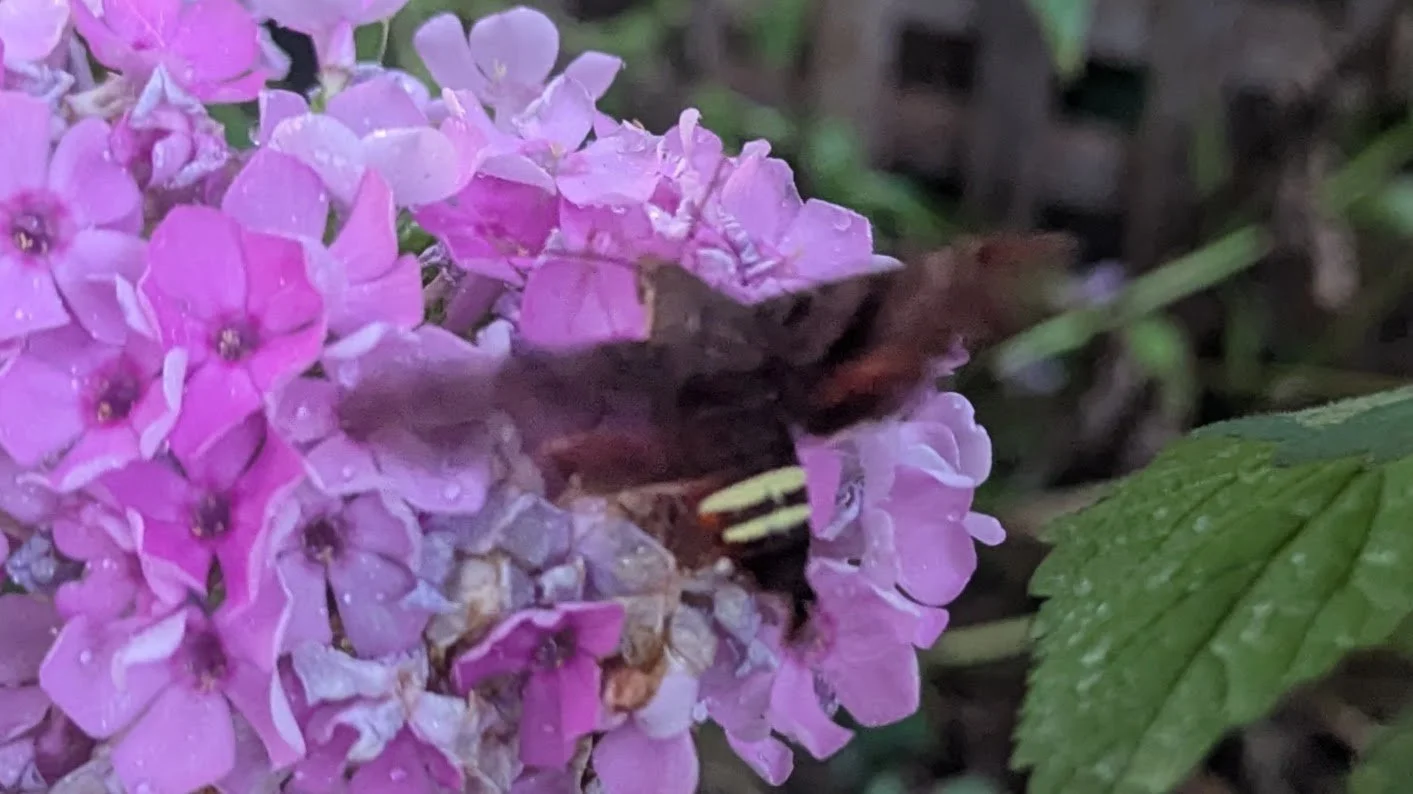Amphion floridensis (Nessus sphinx moth)
Photo: Hood Street, Summer 2025
Overview
Common name: Nessus sphinx
Family: Sphingidae (hawkmoths)
Range: Widespread in eastern North America, from southern Canada through Florida and west to Texas and the Great Plains. Occasionally strays farther north and west.
Appearance: A day-flying sphinx moth with two distinctive bright yellow abdominal bands and a narrow, streamlined body. Forewings are brown with faint patterns; hindwings have reddish-orange bases.
Ecological Role
Pollinator
Adults visit and pollinate a wide range of flowers, especially tubular blooms with nectar available in daytime.
Because they hover like hummingbirds, they can pollinate flowers that are less accessible to bees and butterflies.
Part of the food web
Caterpillars are herbivores on native vines, feeding on leaves of certain members of the grape family (Vitaceae) and related plants.
Caterpillars and pupae are prey for birds, wasps, and small mammals.
Photo: Hood Street, Summer 2025
Life Cycle
Flight period: Typically two broods in much of the U.S. (spring and summer); in the far north, often just one brood. Adults are active daytime through early evening.
Eggs: Laid singly on host plant leaves.
Larvae: Large, green or brown caterpillars with a small horn at the rear end (typical of sphinx moths). They feed for ~2–3 weeks before leaving the host plant to pupate.
Pupation: In loose soil or leaf litter at the base of host plants. Overwinter as pupae in colder climates.
Generations:
North: 1 generation/year.
South/Mid-Atlantic: 2–3 generations/year.
Photo: Hood Street, Summer 2025
Native Host Plants (Larval food sources)
The caterpillars feed mainly on members of the grape family. Native options include:
Wild grape (Vitis riparia, Vitis aestivalis, Vitis vulpina, etc.)
Virginia creeper (Parthenocissus quinquefolia)
Peppervine (Ampelopsis arborea) — more common in the Southeast.
Providing native vines instead of ornamental hybrids gives both food for caterpillars and nectar/pollen habitat for other insects.
Photo: Hood Street, Summer 2025
Adult Nectar Sources (Native nectar plants)
Adults feed at flowers with accessible nectar in daylight. In native plant gardens, good options include:
Phlox paniculata (garden phlox)
Lonicera sempervirens (native honeysuckle)
Habitat Tips to Support Amphion floridensis
Photo: Hood Street, Summer 2025
Grow native host vines along fences, trellises, or as groundcovers—especially wild grapes and Virginia creeper.
Include a mix of nectar plants blooming from late spring into summer to feed adults.
Avoid pesticides on host and nectar plants.
Leave some leaf litter or loose soil at the base of vines for pupation sites.
Plant in sunny or lightly shaded areas, since adults are active in daylight and prefer warm, open spaces.




